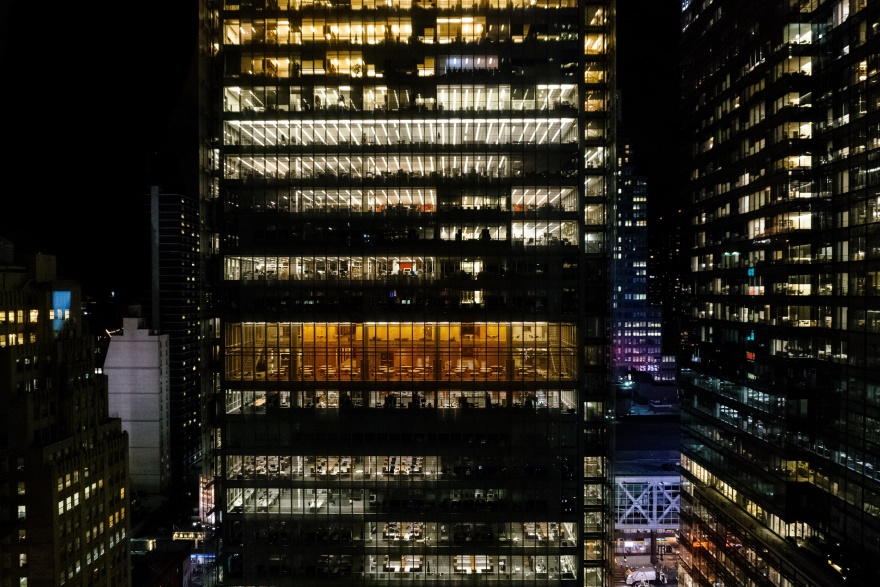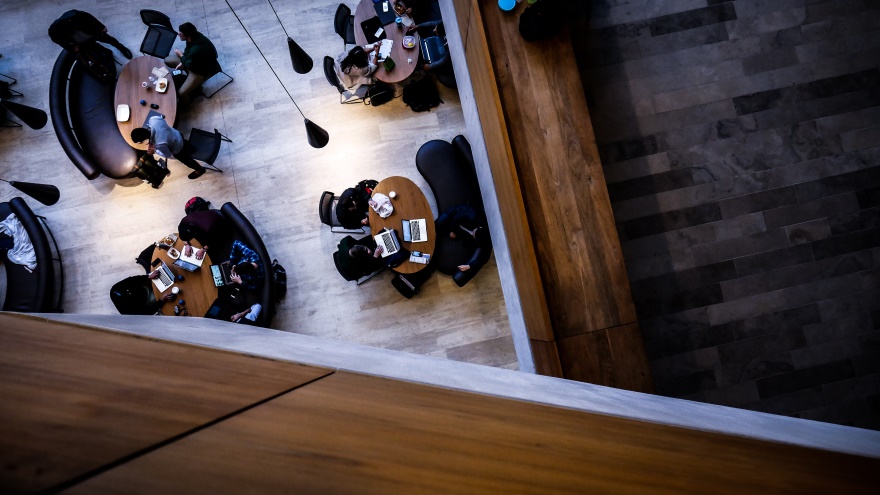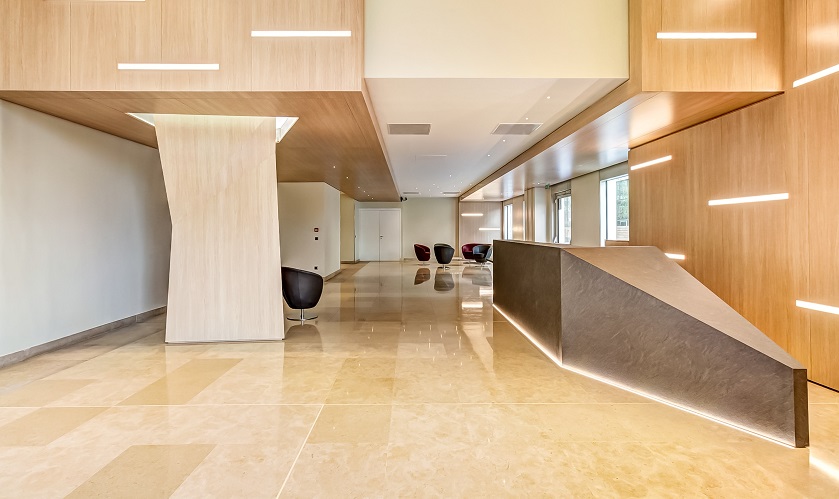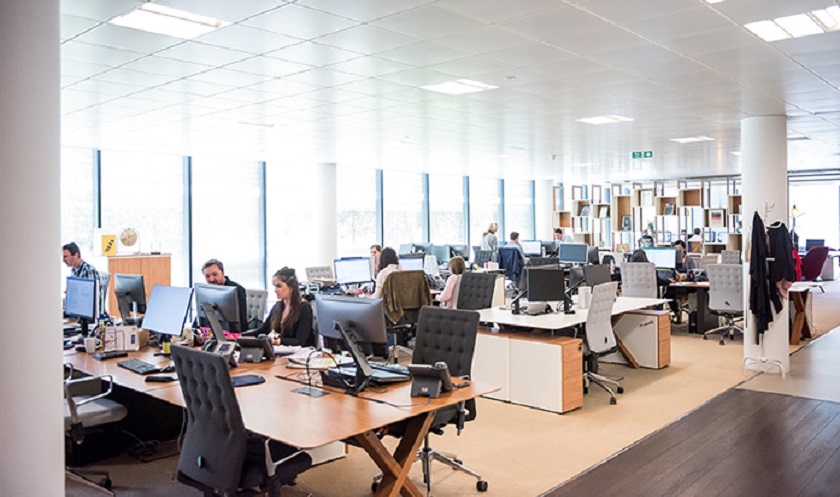The efficient utilization of space has become an increasingly critical concern in a variety of domains, such as urban planning, architecture, workplace design and facility management.
Amidst this backdrop, the terms “space utilization” and “space occupancy” have emerged, often creating confusion due to their apparent similarity.
In this article, we will delve into the distinction between space utilization and space occupancy, two fundamental concepts in the field of spatial analysis. While these terms are often used interchangeably, their meanings differ significantly.
The aim is to clarify the disparities between these terms, elucidating their unique characteristics, implications and practical applications.
What is Space Utilization?
Space utilization refers to the degree to which a specific area or facility is used effectively for its intended purpose. It measures the extent to which available space is employed efficiently, taking into account factors such as layout design, room configuration, equipment placement and overall functionality.
Space utilization is commonly assessed by analyzing metrics such as occupancy rates, usage patterns and time allocation.
What is Space Occupancy?
In contrast to space utilization, space occupancy focuses on the actual presence or occupancy of individuals within a given space at any given time. It represents the real-time utilization of a space, regardless of how effectively or efficiently it is used.
Space occupancy measures the number of people physically present in a space, taking into account factors such as seating capacity, foot traffic and utilization patterns.
Space Utilization and Space Occupancy: Key Differences
Here we have jotted down the key differences between Space Utilization and Space Occupancy:
Metrics
Space utilization primarily employs quantitative metrics such as utilization rates, productivity ratios, or floor area ratios. These metrics help determine the efficiency of space usage based on predefined benchmarks.
Commonly used space utilization metrics:
Space Utilization Rate:
The space utilization rate is a fundamental metric used to determine the efficiency of space usage within a facility. It measures the percentage of space that is actively utilized compared to the total available space. By calculating the ratio of occupied space to the total space, organizations can assess the effectiveness of their space allocation strategies. A high space utilization rate indicates optimal space usage and signifies an efficiently managed facility.
Room Occupancy:
Room occupancy is a metric used to analyze how frequently individual rooms or areas within a facility are occupied. It helps identify underutilized spaces that could be repurposed or reallocated for more productive use. By monitoring room occupancy rates over time, organizations can identify patterns, peak periods and trends to make informed decisions regarding space utilization, such as adjusting working schedules or implementing shared spaces.
Desk Utilization:
Desk utilization metrics focus specifically on workspaces within an office environment. It measures the utilization rate of desks or workstations compared to the total number of desks available. This metric helps organizations identify whether they have an appropriate number of workstations and whether they are effectively utilized. By analyzing desk utilization, organizations can optimize workspace allocation, implement hot-desking strategies or identify areas where additional desks are required.
Storage Capacity Utilization:
Storage capacity utilization measures the efficiency of storage spaces within a facility, such as warehouses, stockrooms or server rooms. It assesses the ratio of occupied storage space to the total available storage capacity. By monitoring storage capacity utilization, organizations can identify opportunities for optimization, such as reorganizing storage layouts, implementing better inventory management practices or identifying excess storage capacity that can be repurposed.
Traffic Flow Analysis:
Traffic flow analysis examines the movement of people or goods within a facility. By analyzing traffic patterns, organizations can identify bottlenecks, congestion points or areas of low activity. This metric helps optimize space utilization by improving the layout and flow of spaces, reallocating resources to high-traffic areas or redesigning workflows to minimize inefficiencies.
Energy Consumption per Square Foot:
While not directly measuring space utilization, energy consumption per square foot is an important metric that indirectly influences space utilization. By tracking energy consumption in relation to the occupied square footage, organizations can identify spaces that consume excessive energy or areas that are underutilized and can be consolidated to reduce energy waste. This metric helps organizations identify opportunities for energy efficiency improvements while also optimizing space usage.
On the other hand, space occupancy relies on qualitative metrics, such as headcounts, footfall analysis, or seating occupancy, providing insights into the actual presence of individuals within a space.
Commonly used space occupancy metrics:
Occupancy Rate:
The occupancy rate is a fundamental metric that measures the percentage of available space being used at a given time. It is calculated by dividing the actual occupied area by the total available area and multiplying the result by 100. This metric provides a basic understanding of space utilization and helps identify underutilized or overcrowded areas. By monitoring occupancy rates over time, organizations can assess the effectiveness of space allocation strategies and make adjustments accordingly.
Peak Occupancy:
Peak occupancy refers to the maximum number of occupants in a space during a specific time period. This metric helps determine the capacity requirements for a given area, ensuring that the space can accommodate peak demand without causing discomfort or safety issues. By analyzing peak occupancy patterns, organizations can optimize resource allocation, plan for additional space if needed and schedule maintenance or cleaning activities during periods of lower occupancy.
Average Occupancy:
The average occupancy metric provides insights into the typical number of occupants in a space over a defined period, such as a day, week or month. It helps identify trends and patterns in space utilization, enabling organizations to optimize space allocation and make informed decisions regarding workspace design, capacity planning and scheduling of events or meetings. Comparing average occupancy across different spaces within a facility or between multiple locations can reveal variations in space utilization efficiency.
Density:
Density is a metric that measures the number of occupants per unit area of space. It provides a quantitative measure of how densely an area is occupied, which is crucial for ensuring a comfortable and productive environment. High-density areas may lead to overcrowding, decreased productivity and potential safety concerns, while low-density areas may indicate underutilization. By analyzing density metrics, organizations can identify opportunities for reconfiguring spaces, implementing hot-desking or shared workspace strategies or adjusting furniture layouts to optimize occupancy and productivity.
Dwell Time:
Dwell time refers to the duration an individual or group occupies a specific space. It can be measured at various levels, from individual workstations to common areas or meeting rooms. Tracking dwell time helps identify areas that are frequently occupied for extended periods or, conversely, spaces that are underutilized. Analyzing dwell time data enables organizations to assess the effectiveness of space allocation, identify bottlenecks or congestion points and make informed decisions about space optimization, such as repurposing or redesigning areas based on actual usage patterns.
Utilization Patterns:
Analyzing utilization patterns involves examining occupancy data over different time frames, such as daily, weekly or monthly patterns. This metric provides insights into how spaces are used throughout the day or week and identifies peak and off-peak periods. By understanding utilization patterns, organizations can optimize scheduling, allocate resources effectively and implement flexible workspace strategies such as activity-based working or staggered shifts to accommodate varying occupancy needs.
Focus
Space utilization emphasizes optimizing spatial resources and achieving maximum efficiency in terms of functionality, productivity, and resource allocation. It aims to enhance the effective use of space by streamlining layouts, improving workflows and reducing wastage.
Space occupancy, however, focuses on the physical presence of individuals, often considering factors like comfort, safety, accessibility and user experience.
Context
Space utilization is crucial in scenarios where resource allocation and efficiency are paramount, such as workplace design, facility management or retail space optimization. It provides insights into areas that can be repurposed, redesigned or reallocated to enhance overall productivity.
Space occupancy, on the other hand, finds relevance in contexts where the number of individuals present is of primary importance, such as event management, crowd control or transportation planning.
Case Study
Now, we will make the differences between space utilization and space occupancy clearer from a practical standpoint.
In an office, a particular meeting room was occupied for 6 hours out of the 9 hours of a workday, so space occupancy would be 66.67%.
On the other hand, in those 6 hours of it being “occupied”, the meeting room designed for 20 people was used by an average of 5 people. So, space utilization would be 25%.
So, for the meeting room, space utilization is not good (only 25%) but space occupancy is okay (66.67%).
The formula for space utilization = occupancy / capacity
Let’s consider another scenario. If there are 34 employees in an office space that supports 50, the space utilization rate is 68%.
The formula for space occupancy = occupied square footage / unoccupied square footage
Or
Space occupancy = number of hours occupied / total office hours
If you occupy 18,000 square feet of space out of an available 25,000 square feet of office space, your space occupancy rate is 72%.
In a corporate office setting, space utilization analysis helps identify underutilized areas, enabling organizations to repurpose those spaces or optimize resource allocation.
Space occupancy analysis, on the other hand, focuses on factors such as workstation utilization, collaboration spaces and meeting room occupancy to ensure adequate seating capacity and foster employee productivity.
Unveiling the Secrets of Space Utilization and Occupancy Tracking
Space utilization and occupancy tracking have become vital aspects of effective space management. Whether it’s a corporate office, a hospital or an educational institution, understanding how spaces are utilized and occupied can lead to enhanced efficiency, cost savings and an improved user experience.
Now, we will explore the methods and tools used to track space utilization & occupancy and discuss the benefits.
Methods to track and measure space utilization and occupancy:
Occupancy Sensors:
A popular and reliable method to monitor space occupancy is using occupancy sensors. These sensors can detect movement, heat or infrared signals and provide real-time data on how many people are present in a given area. Occupancy sensors can be installed discreetly in various locations, such as ceilings, walls or doorways.
Space Surveys and Check-ins:
Conducting regular surveys and implementing check-in systems can provide valuable insights into space utilization. Surveys can collect data on how employees or visitors use different areas, while check-ins can track the frequency and duration of their presence. This method is often used in coworking spaces, conference rooms and libraries.
Utilization Software and Applications:
There are numerous software solutions and applications available that offer comprehensive space utilization and occupancy tracking. These tools utilize data from sensors, surveys or manual inputs to generate detailed reports and visualizations. They can help organizations identify occupancy patterns, peak hours and areas requiring optimization.
Room and Desk Booking Systems:
Implementing room and desk booking systems can facilitate effective space utilization tracking. Employees reserve desks or meeting rooms based on their needs, providing valuable data on space usage. This method is particularly useful in flexible work environments and shared spaces.
CCTV Monitoring:
Closed-circuit television (CCTV) cameras can be utilized to track space occupancy, especially in larger areas. By analyzing camera footage, organizations can determine the number of people present in different sections or identify busy periods.
The benefits of space utilization and occupancy tracking:
Enhanced Efficiency:
Tracking space utilization and occupancy allows organizations to optimize their space allocation, ensuring that every square foot is utilized effectively. This optimization can lead to improved workflow, reduced congestion and increased productivity.
Cost Savings:
By understanding how spaces are used, organizations can identify underutilized areas and repurpose them accordingly. This approach helps in minimizing wasted resources and avoiding unnecessary expansion or construction costs.
Better workplace Experience:
Efficiently managed spaces contribute to a positive workplace experience for employees and visitors alike. Tracking space utilization and occupancy enables organizations to create environments that cater to the needs of individuals, leading to increased satisfaction and engagement.
Wrapping Up
Space utilization and space occupancy are two related but distinct concepts in facility management. While space utilization measures the efficiency of space usage, space occupancy measures its capacity.
Understanding the difference between these two concepts can help facility managers and business owners optimize space usage and improve overall efficiency.
Cheers!




